Congratulations on your new dog! Whether the current addition to your household is a puppy or an older dog, there’s one vital thing you must begin immediately—socializing them! Socialization is crucial for dogs, as without it, a canine may become fearful of strangers and other animals or even aggressive towards them. An unsocialized dog might also dislike being touched by anyone who isn’t you or the immediate family, be frightened of everyday sounds, and not be up for adventures that involve leaving the house.
But how do you socialize your dog, especially when it comes to other dogs? The process may take some time, but it isn’t nearly as hard as you might imagine. Here’s our guide of 9 training tips to help you better socialize your canine companion!

The 9 Training Tips to Socialize a Dog With Other Dogs:
When you’re ready to begin socializing your dog with other dogs, these training tips will be useful! With this guide, you should have a much simpler time getting your dog to be friendly with other pups.
1. Practice patience.
Socializing a dog isn’t a “jump into the deep end of the pool” endeavor. It will take time and several small steps to accomplish. So, be patient with the process!
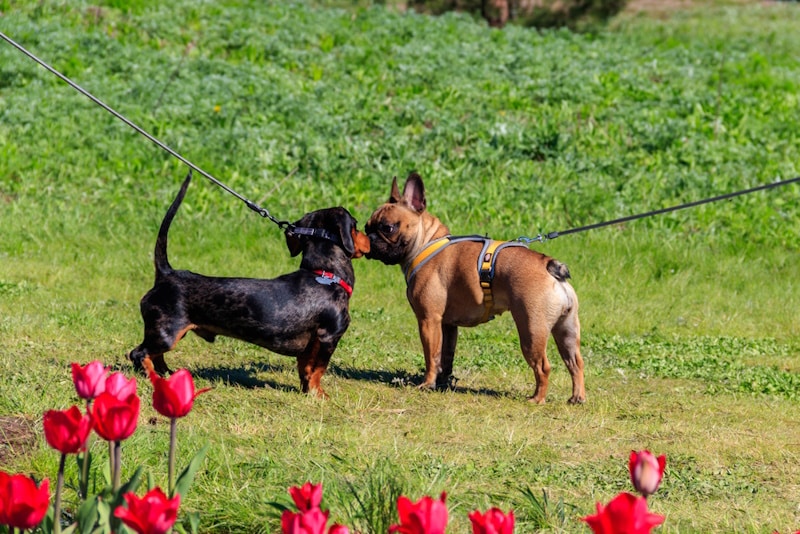
2. Time training right.
The best time to socialize a dog is when they’re a puppy—specifically, the best time to start is when they are between 3 and 12 weeks old. This is when your pup should start being exposed to all kinds of new things, from new places to unfamiliar people to, yes, other dogs.
Why so early? Because after the age of 4 months, it can be much more difficult to socialize a dog. However, you do not want to risk your puppy getting sick, so while their vaccination schedule is incomplete, we recommend only socializing them with dogs with a known vaccination and health record. If you’ve recently adopted an older dog who needs help in the socialization area, though, don’t worry too much. Older dogs can learn to socialize; it just may take them longer, and if the dog had a traumatic past, there’s a chance that they will never be completely comfortable around other pups.
Dogs can easily pick up on emotions, so if you’re nervous about how your dog will do with socialization, your pup will pick up on it and become nervous, too. Do your best to stay calm and positive during the process!
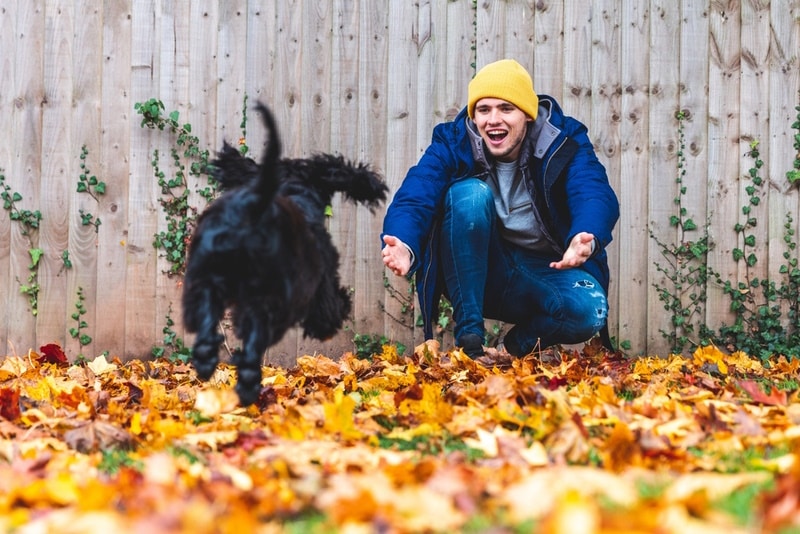
4. Begin by introducing your dog to a single dog, like on a walk or doggy playdate.
Going straight to a dog park or doggy daycare could be incredibly overwhelming for your pet, so introducing them to just one dog to start is preferable. Ask a friend with a chill, laidback pup if your pets can go on a walk together. See how the dogs react to each other during the walk; if things are calm and going well, you can turn the walk into a playdate and let them play together off-leash.
5. Watch out for aggressive situations.
Dogs won’t always get along at first (or sometimes at all). If your pup and their new potential doggy friend are growling or barking at each other, remove them from the situation. Once your pup has calmed down, you can try introducing the dogs again.
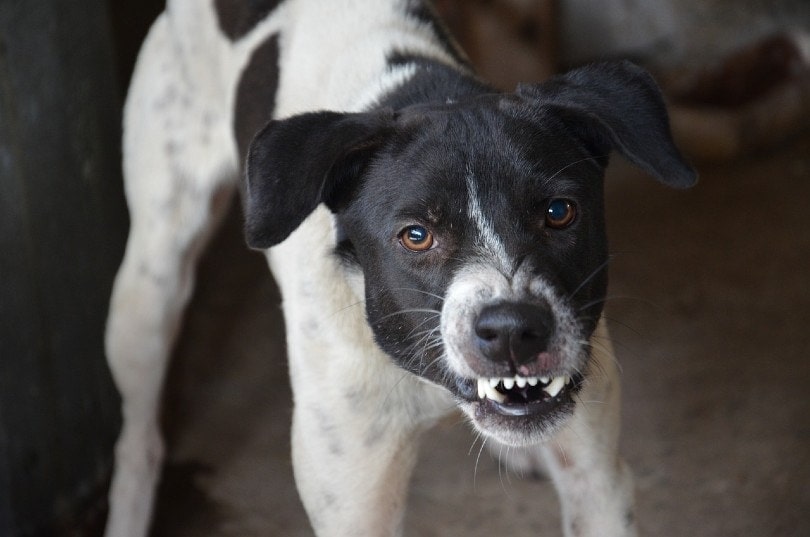
6. Don’t punish your pet for barking or growling!
We understand that your dog barking and growling at another dog or engaging in other aggressive behavior can be nerve-wracking, but know that their behavior comes from a place of fear. So, it’s important that you don’t yell at your pet for their behavior. Instead, do as we said above and remove them from the situation to calm them down.
7. Do offer plenty of rewards.
Reward your dog for calm behavior when in the presence of another dog. Also, reward your dog for any friendly or positive interaction with another dog! A reward in social situations could be a word of praise or a cuddle, both of which provide comfort and reassurance to your pup. When socializing dogs, treats should only be offered if all dogs involved are allowed to get them, so ensure you get the other dog owners’ cooperation before offering a treat to your dog. Positive reinforcement is a powerful tool, but it should be done right.
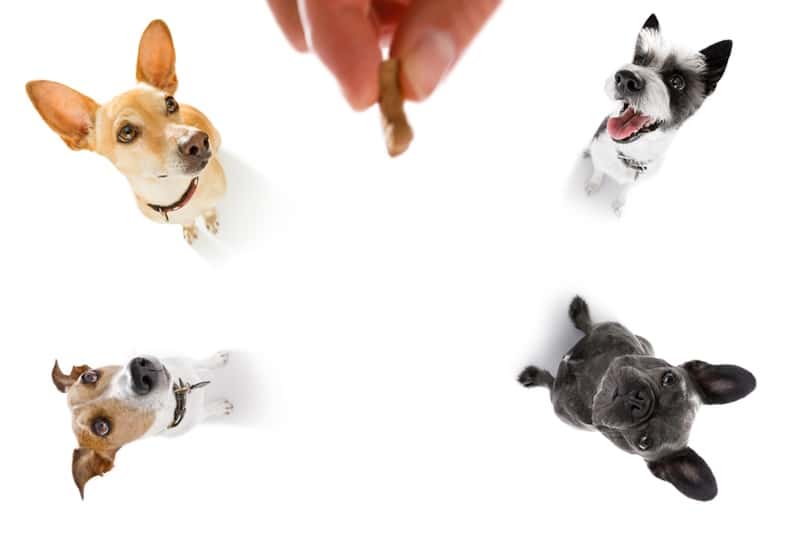
8. Pay attention to your pup’s body language.
For successful interactions, ensure that meetings with other dogs are long enough for them and your pup to get acquainted, but not so long that your dog becomes uncomfortable or exhausted. So, keep an eye on your dog to pick up any cues they’re giving about how they’re feeling.
9. Go on walks regularly and occasionally mix things up.
After your dog has had a successful playdate with a friend’s dog, you can start letting them get used to other dogs out in the wild (aka dogs met on walks). Walking every day gives your pet the opportunity to meet not only other dogs but also people on a regular basis. However, it’s good to mix up your walking route on occasion so your dog doesn’t get used to the same dogs and people but is instead continuously exposed to new situations.
Try going to a dog park.
Has your dog been doing well meeting other dogs one-on-one and while on walks? Then, it’s time to head to the dog park! The dog park is a fairly safe environment for letting your dog meet other canine friends, as it’s enclosed, and other dog owners will, hopefully, respect your pet’s boundaries. You might want to start with a visit where you stay outside the gate, though, to see how your dog reacts before heading inside on the next visit. Be sure to keep a close eye on your pet in case they encounter any dogs exhibiting aggressive behavior.
Consider doggy daycare.
You may not have a need for doggy daycare, but letting your pup go there once or twice a week can help them greatly with socialization. This way, they meet other pups they will consistently get to hang out with, forming a routine.
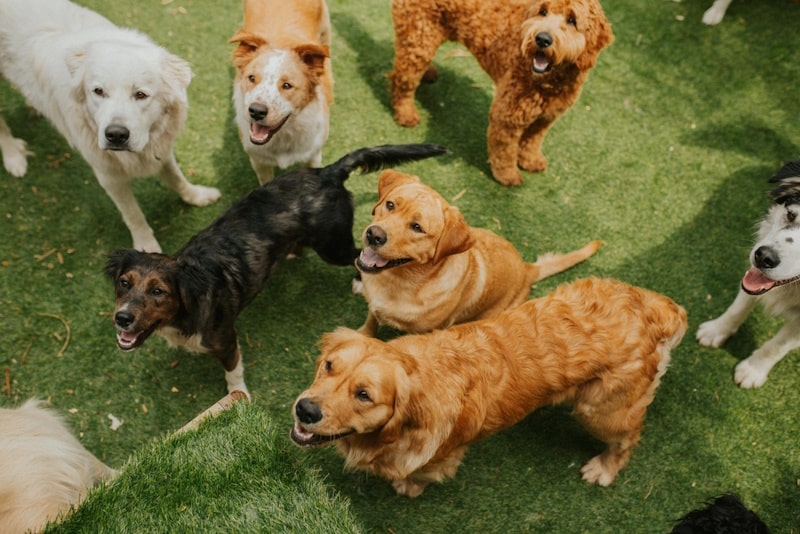
Consider training classes.
Training classes are another excellent structured opportunity for your pet to meet others while under the watchful eye of yourself and a trainer. Training classes can also be fantastic for teaching your dog good behavior and social skills, as well as a few fun tricks or behaviors to keep your dog mentally stimulated and prevent boredom!
If you need to speak with a vet but can't get to one, head over to PangoVet. It's our online service where you can talk to a vet online and get the advice you need for your pet — all at an affordable price!


Conclusion
Socializing a dog with other dogs is a bit of a time-consuming process, but it’s a process that cannot be skipped. Whether you have a puppy or an older dog, socialization is vital to their well-being. Using the training tips above, you can help your canine pal have an easier time learning to meet strangers and get along with them!
See also:
- How to Make Your Dog Friendly to Strangers: 10 Great Ways
- Royals Bark At The Park: What It Is & How To Bring Your Pup
Featured Image Credit: Joy Brown, Shutterstock

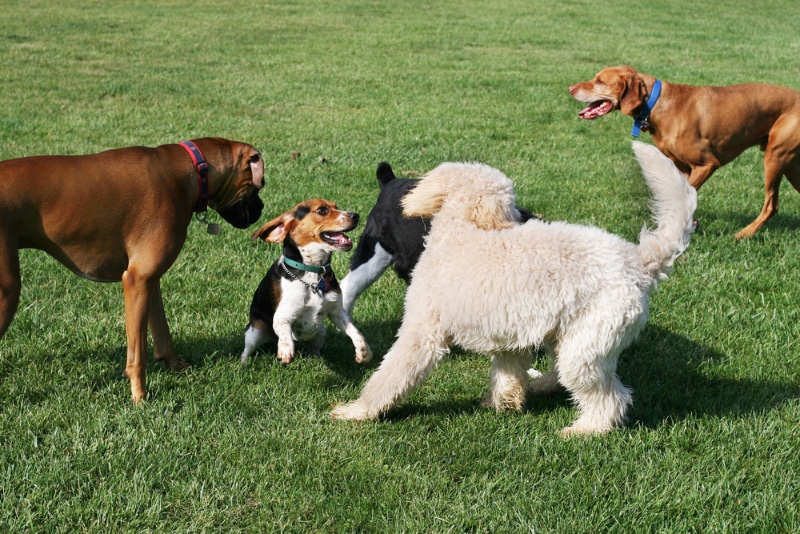



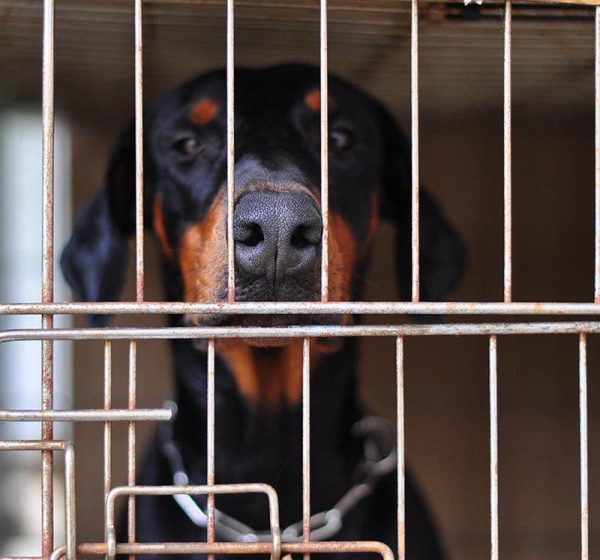

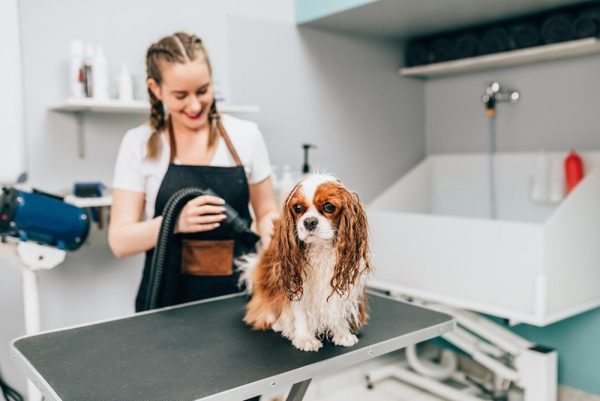
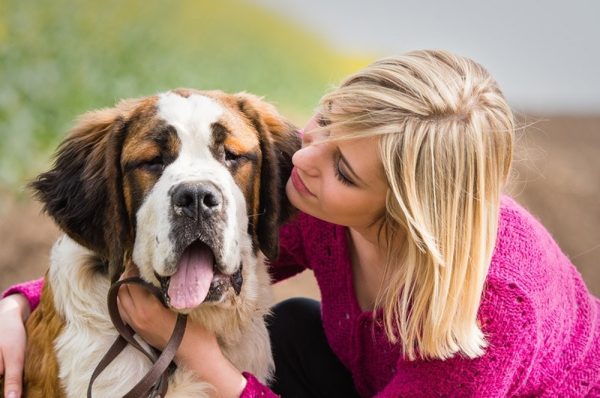




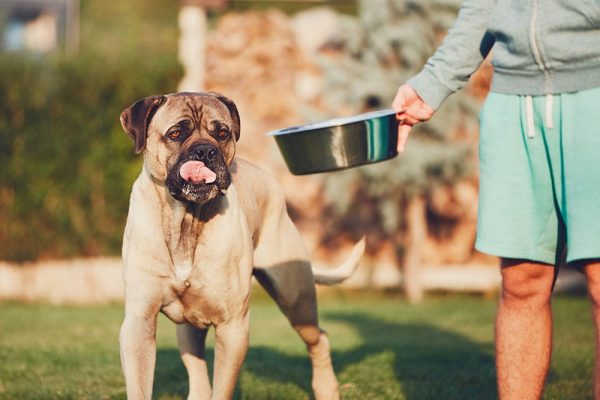


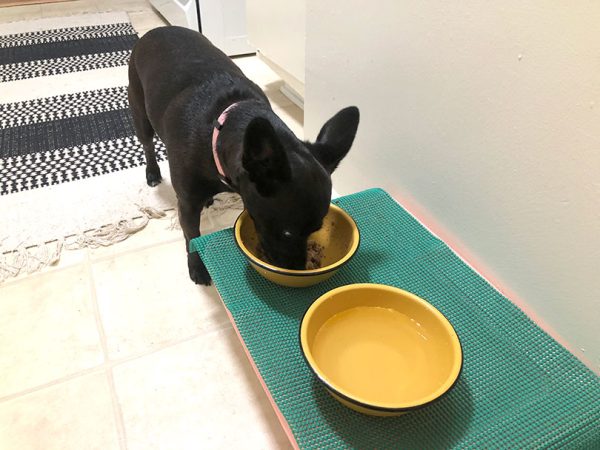




2 Responses
love this post
Hello there,
Thank you for your kind words! We are glad to hear that you love the article. We appreciate you being part of our community.